Common House Plant Problems and Solutions
May 02, 2022
Learning the basic needs for each type of house plant takes time, and if you listen closely, your plant will tell you exactly what it needs. Leaves will wilt or turn yellow, stems will turn brown, flowers will stop coming, growth will slow, or worse. Knowing the fundamentals can keep these things from happening.
Know The Five House Plant Basics
The first step to overcoming plant problems is to know your plant’s needs. The growing needs of each house plant is as unique as their places of origin. For example, the Monstera grows in the tropical rainforests of Central America, the Golden Barrel Cactus comes from the deserts of Central Mexico, and common Aloe Vera plant comes naturally inhabits the dry slopes of Arabia. Each has its own basic needs, which are essential to learn before bringing these or any house plant into your home. The five house plant basics are:
- Light – It’s usually a range of light—somewhere full shade and full sun.
- Soil – Most plants prefer well-drained soil that holds water well and has a neutral pH.
- Water – Most plants require average soil moisture—over and under watering is the main house plant killer.
- Temperature and Humidity – Many house plants are temperature sensitive and require different humidity levels to thrive.
- Food – House plant foods vary widely—be sure to identify the best type of food and feeding schedule for yours.
Even when knowing the basics, some home gardeners can fall into the trap of giving their plants too much or too little “care”. Here are the signs of the most common house plant problems and their solutions.
Symptoms of Over and Underwatering
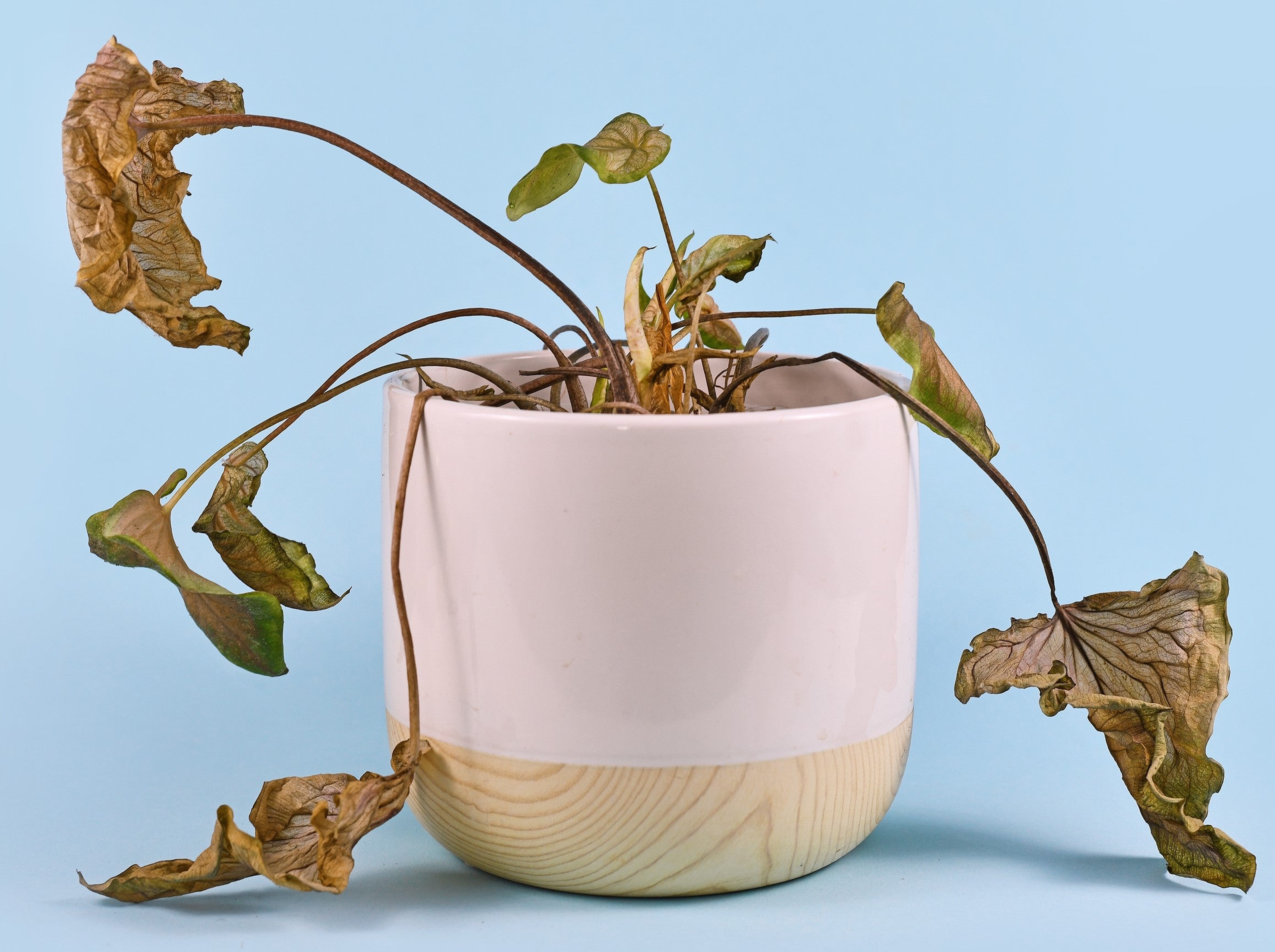
Oddly enough, when plants get too much water they wilt and when they get too little water they wilt. To determine which is the problem, you need to look at the soil and the base of the plant’s stems.
- Too little water – the soil will be light, dry, and the plant’s stems will be sunken and dry. Start watering immediately—allowing water to run from the bottom of the pot. Start a regular watering schedule that will ensure your plant will not become too dry.
- Too much water – The soil will be dark, wet, may have algae or moss on the surface, and the plant’s stems may be browning at the base and showing signs of rot. Stop watering immediately and allow the soil to become quite dry (down to 3 inches) before watering again. Cut back any stems that show signs of browning and rot. Make sure that your pot has good drainage, and continue to allow the pot to become lightly dry between watering.
Symptoms of Too Much or Too Little Sunlight

Too much or too little sunlight can make a big difference in the performance of your plant. Leaf color, number, stem length, and overall growth are good indicators of whether your plants are getting the right light.
- Too little light – Stems tend to stretch towards the light. Leaves are fewer, lighter, may turn yellow, and drop prematurely. Overall growth may be stunted. Move the plants to a location with more light immediately.
- Too much light – Leaves may scorch and turn brown or turn darker shades or lighter shades as a sign of stress. Overall growth may be stunted. Move the plant to a location with indirect or filtered light.
Symptoms of Poor Humidity
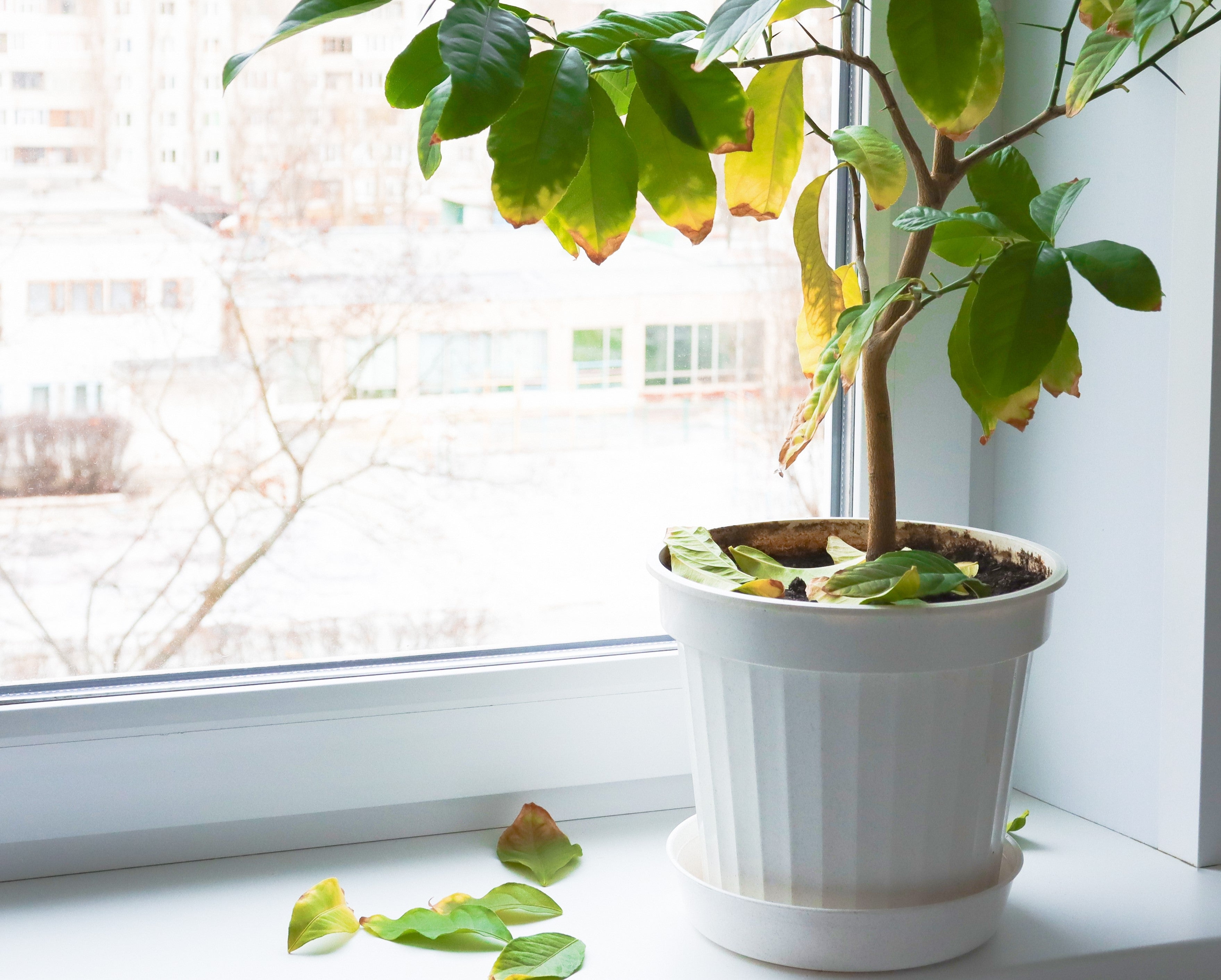
any plants are adapted to regions with high or low humidity. For this reason, improper humidity can be very stressful to plants, especially those on the far ends of the range—desert and rainforest plants. Overall, most house plants appreciate a higher general humidity level of 70 to 80 %, but it is a challenge to achieve and most find it uncomfortable. Often, a more achievable average level of 30-50% humidity will suffice, though true rainforest plants appreciate more. Avoid placing plants near drying vents, fans, and heaters, which will directly reduce humidity levels around plants.
- Too little humidity – Plants will wilt faster after watering, leaves may become dry at the tips, and leaf drop may occur. Dry air can also negatively impact flower bud and flower development. Spritz plants regularly with spring water, bring a humidifier into the room, or place plants on a water/pebble tray to increase local humidity levels.
- Too much humidity – Cacti and succulents are more susceptible to infection when the air is too moist. Under extreme conditions, they may show spotting or signs of stem, root, or crown rot if humidity levels remain consistently high. Move the plants to a location with less humidity or bring a dehumidifier into the room.
Symptoms of Over- or Under-Fertilization
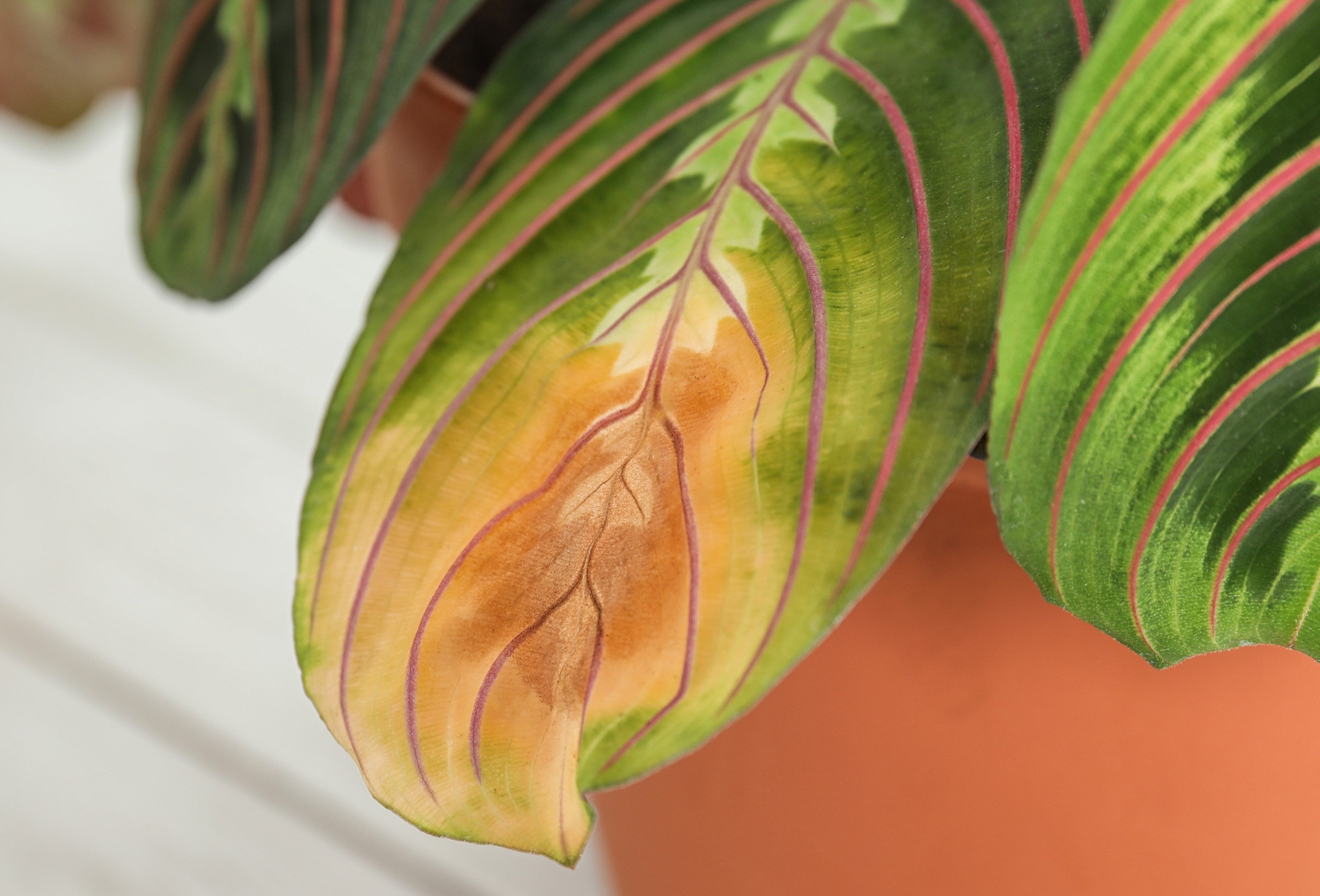
Plants can exhibit nutrient deficiencies in many ways—leaves may be pale green, yellow, or develop chlorosis, a condition where leaf veins remain green and all other tissue turns yellow. New leaves, flowers, or fruits may be stunted or new growth may die. Such deficiencies involve the macronutrients, Nitrogen, Phosphorus, and Potassium, as well as micronutrients, like Boron, Calcium, and Iron.
- Too little fertilizer – Plants may exhibit various signs of poor growth and poor leaf health without any visible sign of disease or pest problem. Feed your plants regularly with a fertilizer formulated for their needs—there are many specialty house plant fertilizers out there. Apply all plant foods according to manufacturer recommendations.
- Too much fertilizer – When plants receive too much fertilizer, they often exhibit fertilizer-burn symptoms, which include leaf wilt, yellowing, or scorch (leaves look at though they have been burned). Symptoms often occur a couple of days after fertilizer application. Water well to rinse the soil and hope for the best. Refrain from fertilizing for at least a month, and when you start feeding again, avoid overapplication. Underfeeding is better than overfeeding.
Symptoms of Too Much Heat or Cold
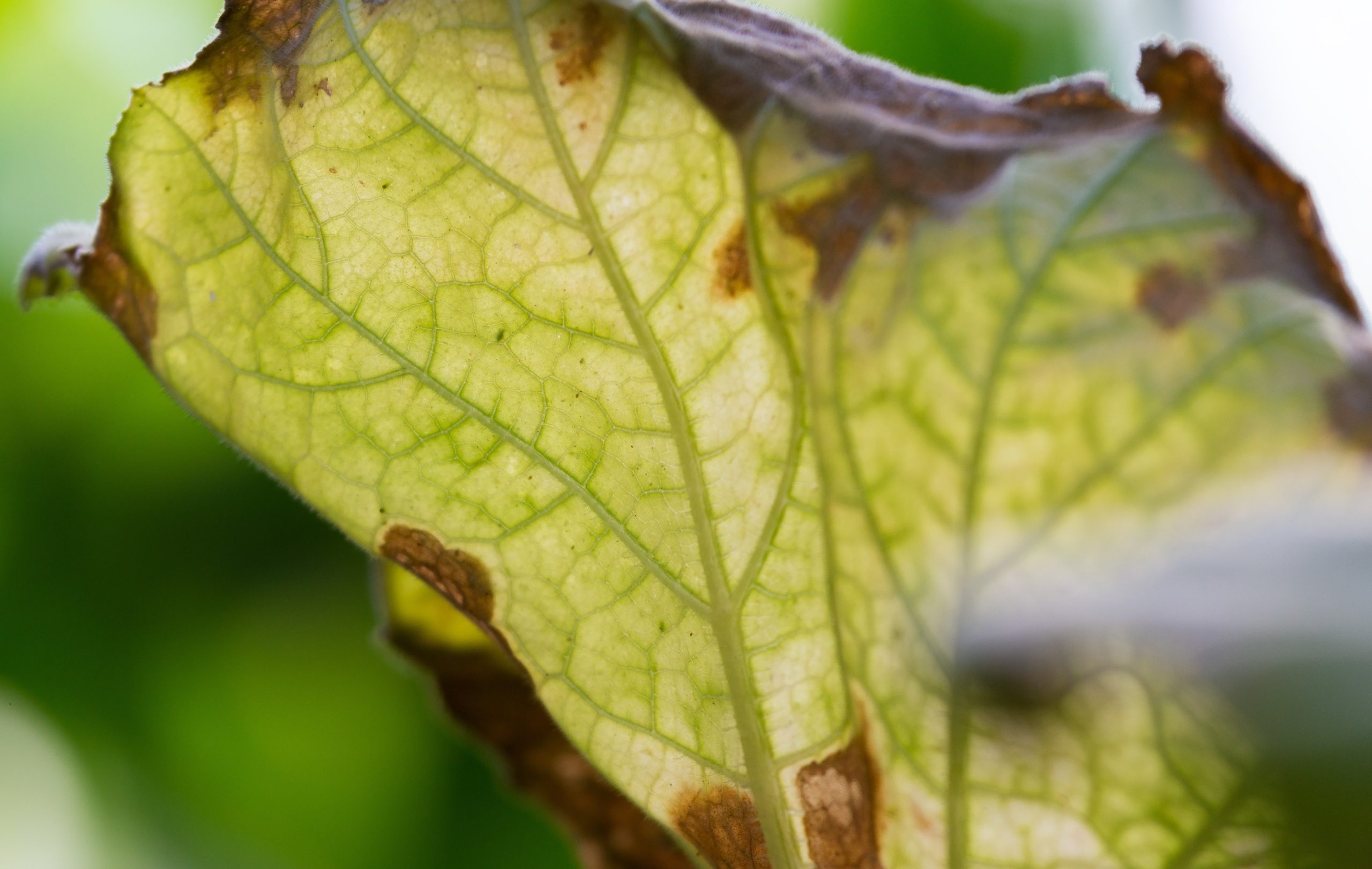
- Too much Heat – High temperatures (85 degrees F and up) can cause many plants stress. When plants are overheated, they will stop flowering, drop fruits, and may even drop leaves. They will wilt more quickly and require water more frequently. Place plants in a location with a little less sun or move them to an air-conditioned location when temperatures rise and water them frequently as needed.
Too much Cold – Too much cold can quickly kill some plants, especially tropicals. Signs of cold include leaf drop, wilting or soft leaves due to tip freeze, and general malaise. Move your plant to a warmer location immediately!
Symptoms of The Wrong Pot Size
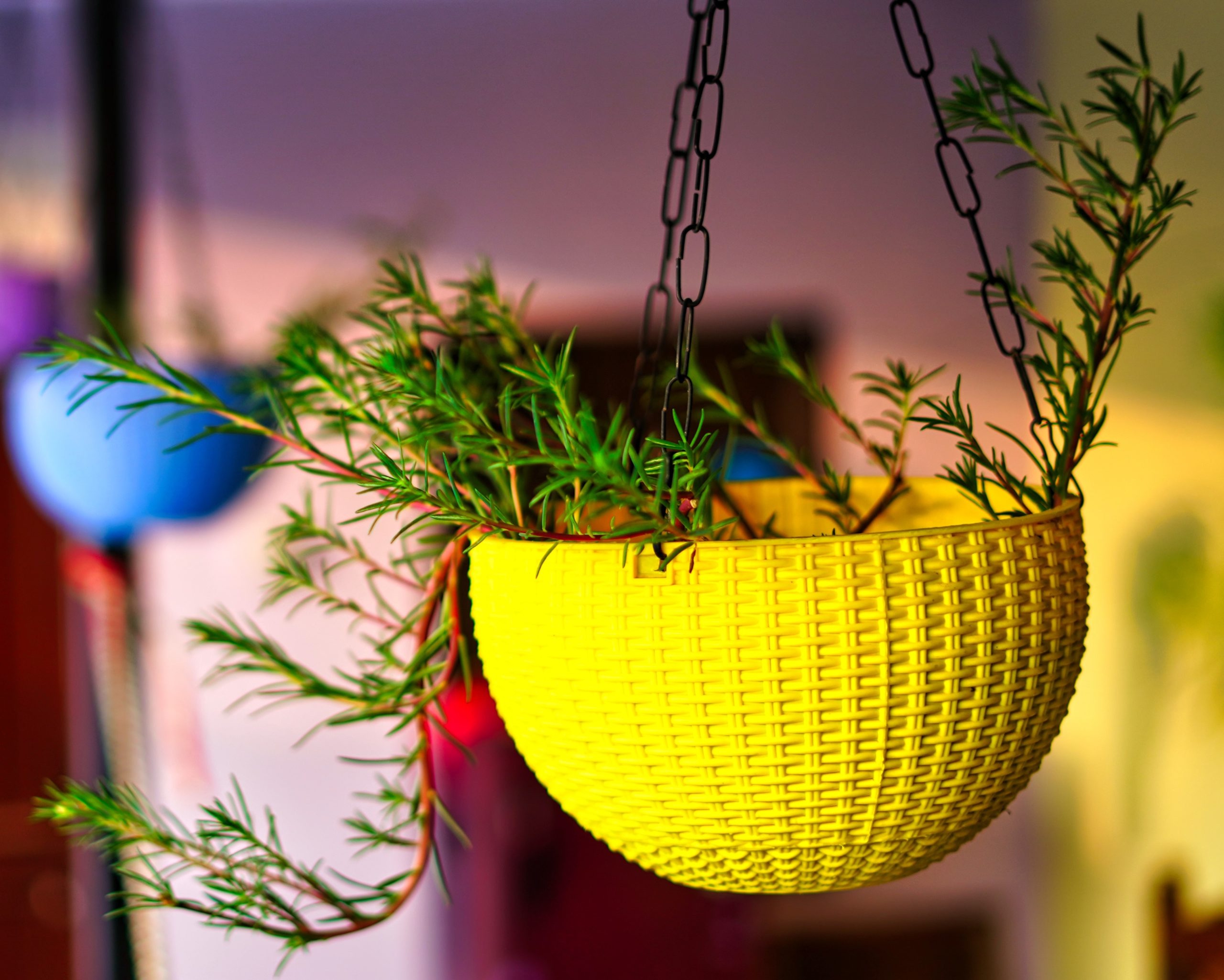
- Too Small a Pot – Plants will show visible stress when they have outgrown a pot and become root-bound. They will require very frequent watering, growth will slow, and leaves may drop. Roots will also appear on the soil surface, along the pot edges, or emerge from the holes in the bottom of the pot. Transplant root-bound plants immediately in pots at least 2 to 3 inches larger. Untangle bound roots to allow them to grow well into the soil of the new pot.
Too Large a Pot – Some plants like to grow in pots that just fit their roots. If planted in a pot that is too large, they will invest energy in root growth before shoot and leaf growth. When this happens, the plants will appear to sit in the pot with little outward growth. When planting or upgrading a plant, choose a pot just a couple of inches larger than the previous one. This will ensure that you are not giving your plant too much root space. It also helps to read about how fast a given house plant will fill a pot.
Learn these symptoms and learn and follow your house plant basics, and you will have the greenest thumb in no time!






